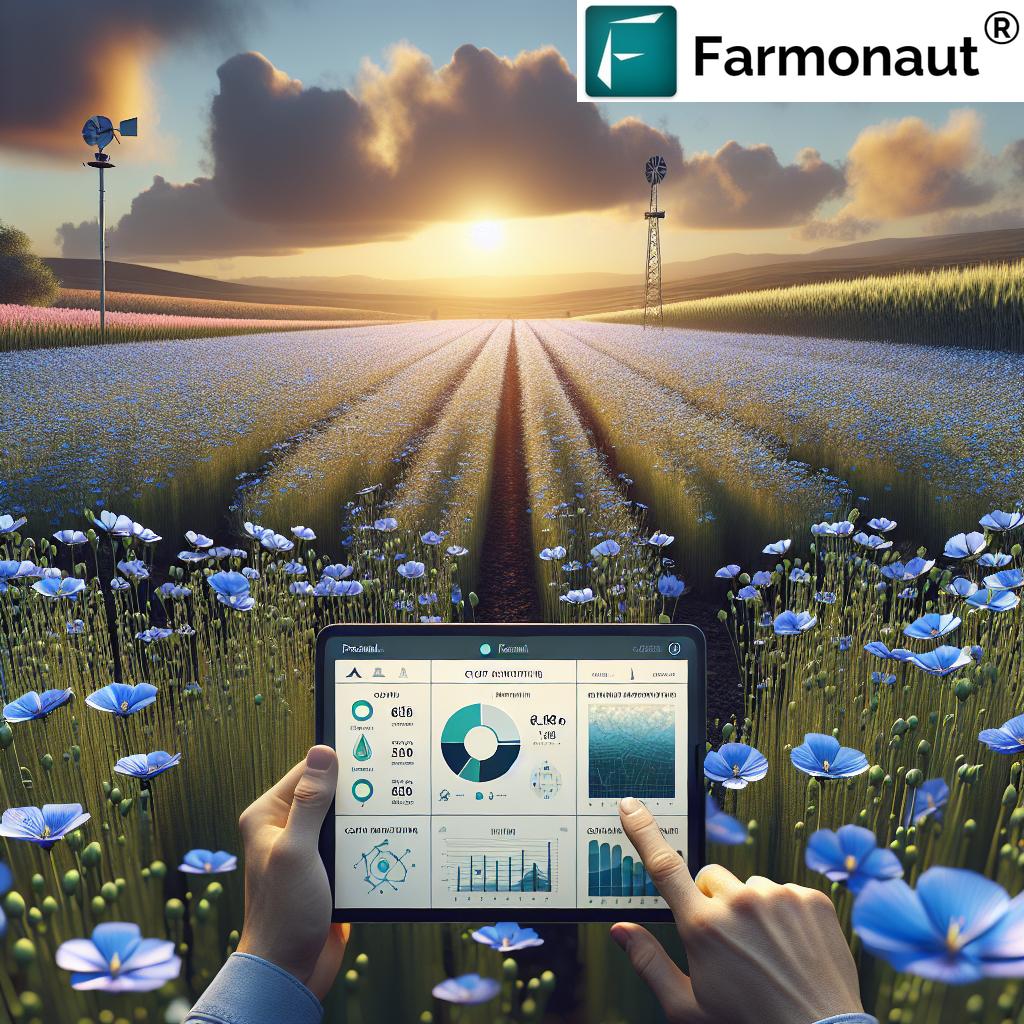Brown Spots on Plant Stem: Fix Banana, Mango, Lemon & Scale (2025 Comprehensive Guide)
Meta Description: Brown spots on plant stem threaten crop health and yields. Discover causes, AI & drone detection, and sustainable 2025 solutions for banana, mango, lemon, and scale issues.
Introduction: The Significance of Brown Spots on Plant Stems
In the constantly evolving realm of agriculture and horticulture, plant health is paramount for ensuring high yields and quality produce. Among the myriad of challenges faced by farmers and growers, the appearance of brown spots on plant stem and fruits is a common, yet often concerning symptom. These brown spots can occur in vital commercial crops – especially banana, mango, and lemon – and signal a range of possible causes such as fungal infections, bacterial diseases, environmental stress factors, and pest infestations including brown scale on plants.
The comprehensive guide below delves into the underlying causes, latest detection and management strategies, and future-ready, sustainable practices for 2025. We’ll highlight the technological innovation shaping modern agriculture – from AI and drone monitoring to advanced integrated management – so farmers, agronomists, and agricultural technologists remain at the forefront of plant health and yield optimization. Whether you’re managing a banana plantation in the tropics or a lemon orchard challenged by brown scale insects, this blog will equip you with insights for effective intervention using 2025’s top precision agriculture solutions.
Understanding Brown Spots on Plant Stem: Causes & Implications
Brown spots on plant stem are multifactorial and often indicate underlying stress or disease. Let’s break down what these spots mean for agriculture and what forms they may take, especially on banana, mango, and lemon plants.
What Causes Brown Spots on Plant Stem and Fruits?
- Fungal Diseases: Common in hot, humid environments and often result in brown, black, or dark lesions along stems and fruits.
- Bacterial Infections: Can cause water-soaked or brown lesions on fresh tissues; often rapidly progressive.
- Environmental Stress Factors: Heatwaves, waterlogging, nutrient imbalances, or mechanical injury can leave brown or necrotic marks.
- Pest Damage: Scale insects, especially brown scale, feed on plant sap causing direct browning and promoting secondary fungal diseases.
Why Are Brown Spots Important to Monitor?
Brown spots indicate a possible compromise of the vascular system, weakened stems or tissues, reduced nutrient transport, and if left unchecked, can lead to plant death. For export and fresh market crops, brown spots also drastically reduce fruit quality and commercial value.

- Tropical crops like bananas and mangoes: Highly susceptible due to their growth in warm and wet climates where disease pressure is high.
- Lemon and citrus: Particularly prone to both fungal fruit spots and persistent brown scale on plants.
Implications for 2025 Agriculture
As climate change increases disease risks, early monitoring and precision intervention are not just recommended – they’re essential for sustainable farming systems.
Banana Plant Brown Spots: Diseases & AI-Driven Control
The banana plant, a staple tropical/subtropical crop, is highly vulnerable to a range of spot-causing pathogens. Banana plant brown spots present a major agronomic challenge – impacting photosynthesis, productivity, and export quality.
Key Brown Spot Diseases in Bananas
-
Black Sigatoka (Mycosphaerella fijiensis)
- Appearance: Small, dark brown streaks on leaves, expanding to form large spots and sometimes affecting the pseudostem.
- Impact: Reduces leaf area, compromises stem and pseudostem health, weakening fruit development.
- Progression: Severe cases lead to premature leaf death and up to 50% yield loss if uncontrolled.
- 2025 Insight: AI-powered drones now detect subtle color changes and spot progression before visible symptoms, enabling targeted fungicidal interventions and reducing excessive chemical use.
-
Anthracnose (Colletotrichum musae)
- Appearance: Circular brown or black lesions seen most commonly on banana fruit post-harvest, but can sometimes spot the stem – especially where injury or humidity is high.
- Spread & Consequences: Leads to storage and transit losses if left unchecked.
- Differentiation: Usually softer than Black Sigatoka lesions.
Other banana diseases may cause brown spots on leaves and stems, but Black Sigatoka and Anthracnose top the list globally.
Fungal Spot Disease Cycle (Banana)
- Wet & humid environments favor fungal spore spread.
- Initial infection occurs via natural leaf/stem openings or wounds.
- Latent phase before visible brown/black spots appear.
- Advanced infection impairs nutrient transport and weakens the plant’s vascular system.
2025 Management Approaches for Banana Brown Spots
- Early AI & Drone Detection: Drones equipped with multispectral imaging (NDVI, NIR) spot disease stress before visual lesions using real-time Farmonaut-style analytics.
- Precision Fungicide Spraying: AI identifies only affected plants, minimizing chemical spray acreage by 30–50% (reducing environmental impact and cost).
- Resistant Cultivars: Adoption of improved banana varieties with genetic resistance to Mycosphaerella fijiensis and Colletotrichum musae.
- Natural Biocontrol & Cultural Practices: Use of Trichoderma, Bacillus, or compost teas; regular field sanitation to remove infected debris.
- Satellite-Based Monitoring: Platforms like Farmonaut offer region-scale crop health alerts, enabling coordinated action even across large plantations. Rapid detection = lower yield loss.
Result: Modern precision agriculture and sustainable brown spot management can reduce banana stem and leaf spot severity by 40% or more as of 2025.
Discover advanced Large Scale Farm Management tools to receive AI-powered disease alerts, NDVI satellite monitoring, and field health analytics – all on a single dashboard.
Brown Spots in Mango: Prevention & Precision Management
The mango, the “king of fruits,” is unfortunately plagued by brown spots in mango – often signifying fungal or bacterial disease that decreases market value and endangers post-harvest quality.
What Causes Brown Spots in Mango?
-
Anthracnose (Colletotrichum gloeosporioides)
- Most prevalent in tropical/subtropical mango-producing regions.
- Presents as small, brown-black lesions on fruit, leaves, and twigs.
- On fruits, lesions often coalesce into large, sunken dark patches. Can even infect stems and induce “twig blight.”
- 2025 Tech: Multispectral and thermal sensors on drones are able to identify subtle metabolic stress that precedes visible anthracnose lesions, empowering early fungal spot intervention.
-
Bacterial Black Spot (Xanthomonas campestris pv. mangiferaeindicae)
- Brown, water-soaked spots with a greasy appearance on fruit and leaf midribs.
- Rapidly expands, leading to ‘exudate’ or sap, and eventually tissue cracking.
Effects of Brown Spots in Mango
- Reduces mango fruit shelf life, increases post-harvest losses.
- May weaken tree structure if stems or twigs are affected (twig die-back, branch death).
- Lowers fruit quality and price.
2025 Management Strategies for Mango Spots
- Real-Time Sensor Detection: Deploying AI-driven remote sensors and satellite surveillance for early pathogen mapping and orchard health alerts (offered on Farmonaut’s monitoring platform).
- Integrated Disease Management:
- Rotate fungicides with different modes of action to slow resistance buildup.
- Use natural antifungal coatings (plant-based wax, chitosan) post-harvest for shelf life extension.
- Apply biocontrol agents (Bacillus, Trichoderma, Pseudomonas) at blossom stage to outcompete pathogens.
- Maintain strict orchard sanitation, remove/compost fallen debris promptly.
- Adopt Traceability Systems: Technologies like Farmonaut’s Blockchain Traceability promote transparency and ensure the entire mango supply chain is contamination-free, bolstering food safety.
For advanced orchard monitoring, use the Farmonaut App for instant crop health, stress, and spot alerts – deployable across Android, iOS, and web!
Brown Spots on Lemon Fruit: Detection, Impact, & 2025 Solutions
Citrus crops, especially lemon, are prone to brown spots on lemon fruit – symptoms that not only reduce quality and market price, but often indicate a deeper fungal or pest problem needing immediate intervention.
Key Diseases Causing Brown Spots on Lemon Fruit
- Citrus Scab (Elsinoe fawcettii): Raised brown lesions, may look warty or corky, mainly on young fruit and tender shoots.
- Greasy Spot (Mycosphaerella citri): Irregular brown oil-like patches on leaves and lemon rinds, sometimes with yellow halos.
- Melanose (Diaporthe citri): Hard, rough brown/black specks or lines on peel; young stems can also show dark spots.
Why Manage Brown Spots on Lemon?
- Visible spots lower fruit grading/marketability – critical for export and high-end retail chains.
- Severe fungal attack can weaken trees, hindering fruit set and future productivity.
- Climate volatility (erratic rainfall, humidity) worsens outbreaks, making precise monitoring essential in 2025 agriculture.
2025 Brown Spot Solutions for Lemons
- AI-Powered Disease Forecasting: Predicts peak infection periods based on real-time climate/humidity data, so fungicides are applied only when needed (not calendar-based).
- Natural Crop Protection: Horticultural oils, copper-based fungicides, and organic extracts reduce fungicide residue.
- IoT Sensor Monitoring: Field sensors detect microclimate changes, triggering alerts for high-risk “spot” events.
- Regular Debris Removal: Removes pathogen habitat, especially after the wet season.
-
 Get Farmonaut’s Satellite App for instant citrus health, brown spot, and pest alerts before visible loss occurs.
Get Farmonaut’s Satellite App for instant citrus health, brown spot, and pest alerts before visible loss occurs.
Use Farmonaut’s real-time environmental tracking to ensure compliance and optimize resource use, all while fighting disease.
Brown Scale on Plants: Pest Challenges & IPM
Scale insects form a major group of pests that leave brown, scaly spots on plant stems, leaves, and fruits. Brown scale on plants is usually caused by Coccus hesperidum, Parlatoria spp., and similar armored/tortoise scales.
How Does Brown Scale Affect Plant Health?
- Feeds on sap, weakening plants and hampering nutrient transport.
- Causes spotting, chlorosis, and early leaf drop.
- Produces honeydew that encourages sooty mold – further diminishing fruit and stem quality.
- Makes crops highly susceptible to fungal and bacterial secondary infections, compounding losses.
2025 IPM Practices for Brown Scale Control
- Biological:
- Release of ladybeetles, parasitic wasps, and lacewings (natural enemies).
- Maintain plant diversity and flowering strips to support beneficials.
- Technological:
- Farmonaut-style AI imaging and satellite pest detection for mapping brown scale outbreaks rapidly over large areas.
- Pheromone traps for early detection and monitoring spread zones.
- Drone-based biopesticide application for inaccessible orchards.
- Chemical/Ecological:
- Horticultural oils and selective, low-residue pesticides (timed during low bee activity periods).
- Mechanical & Sanitation:
- Removal of heavily infested branches/stems; prompt pruning.
For large-scale smart pest mapping, use Farmonaut’s API: sat.farmonaut.com/api
Developer Docs: Farmonaut Satellite Weather API Developer Docs
Video Insights: Technology, Organic & Precision Solutions
Explore practical approaches for fighting brown spots on plant stems and fruits using a blend of organic, AI-driven, and precision control methods for 2025 agriculture:
Comparative Causes & Solutions Table for Brown Spots: Banana, Mango, Lemon
Quickly compare common causes, AI & drone detection methods, 2025 sustainable solutions, and estimated effectiveness for each focus crop:
| Crop | Common Causes | AI & Drone Detection Methods (2025) | Sustainable Solutions (2025+) | Estimated Effectiveness (%) |
|---|---|---|---|---|
| Banana | Black Sigatoka (Mycosphaerella fijiensis), Anthracnose (Colletotrichum musae), pseudostem rot | Drones with NDVI/multispectral sensors; AI-based pattern recognition; satellite remote sensing | Resistant cultivars, AI-fungicide targeting, biocontrol, orchard sanitation, Farmonaut satellite monitoring | 85% detection accuracy, ~70% reduction in severity |
| Mango | Anthracnose (Colletotrichum gloeosporioides), Bacterial black spot, stem/twig blight | Farmonaut satellite imaging; IoT microclimate sensors; drone AI detection | Organic antifungal coatings, biocontrol, digital orchard hygiene, blockchain traceability, remote alerts | 80% detection accuracy, ~65% reduction in postharvest loss |
| Lemon | Citrus scab (Elsinoe fawcettii), Melanose, greasy spot, brown scale insects | Drone & satellite AI image analysis, field humidity sensors; drone pest scouting | Smart fungicide scheduling, organic oils, precise debris management, pest biocontrol, Farmonaut pest / disease alerts | 80% detection accuracy, ~60% improvement in fruit quality |
Farmonaut’s Satellite AI: Elevating Disease & Scale Detection
We, at Farmonaut, deploy affordable, satellite-driven crop health monitoring, AI-based stress/disease detection, and blockchain traceability so farmers can proactively address brown spots on plant stem across crops like banana, mango, and lemon.
- Satellite Monitoring (NDVI, vegetation indices): Detects stress areas before brown spots are visible.
- Jeevn AI Advisory System: Recommends timely interventions for disease, pest, and climate stress based on satellite and in-field data.
- Blockchain Traceability: Ensures supply chain transparency and product authenticity for affected crops.
- Fleet & Resource Management: Optimizes farm vehicle and machinery usage, reducing costs for large and small agricultural enterprises facing disease or pest risks.
- Environmental Tracking: Measures carbon footprint and resource sustainability—a vital advantage for export fruit growers and future-focused eco-label compliance.
Learn more about Farmonaut’s Carbon Footprinting Services.
Farmonaut users benefit from:
– Early warning systems for brown spot diseases and scale insect infestations
– Reduced losses through real-time monitoring and actionable AI-based advice
– Regulatory compliance and improved access to financial products (see: crop loan & insurance verification)
– Trustworthy supply chain data for buyers and export channels
Access Monitoring & Solutions – Farmonaut Apps & API
Instantly monitor banana, mango, and lemon fields for brown spots and scale issues anytime, anywhere:
-

Farmonaut Web & Mobile App – Satellite-based crop health, disease alerts, carbon tracking, and resource management for all crop types. -

Android App -

iOS App -
API for Third-Party Integration:
sat.farmonaut.com/api
API Developer Docs: Farmonaut API Docs
Integrated Sustainable Practices & Precision Farming for Brown Spots Management
2025’s agricultural systems require integration of tradition and technology for resilient, high-yielding crops—especially against brown spot and scale threats.
- Combine organic and synthetic approaches: Use the safest, residue-free biocontrols and only deploy fungicides or pesticides with AI-driven timing (reducing total applications).
- Leverage satellite detection and drones: Reduce unnecessary human scouting and focus resources only on “real problem” hotspots detected by precision imaging.
- Maintain orchard and field hygiene: Regularly remove dead or diseased wood/fruit, prune for air flow, and compost debris away from cultivation zones.
- Foster ecosystem health: Maintain flowering plants for pest predator populations and buffer strips for beneficial microbes.
- Adopt blockchain-powered traceability for immediate, verifiable supply chain safety in export markets and scale-intensive agri-businesses.
FAQ – Brown Spots on Plant Stem, Fruits & Scale
A: Brown spots generally indicate fungal (e.g., anthracnose, black sigatoka), bacterial disease, environmental or nutrient stress, or pest infestation (like brown scale insects). They compromise plant health and should trigger immediate monitoring.
Q2: Can I use AI technology to detect brown spots before they are visible?
A: Yes! In 2025, AI-driven satellite and drone platforms (like Farmonaut) can detect stress and spot formation up to 1–2 weeks before symptoms are apparent to human observers, allowing for more effective, timely intervention.
Q3: What is the best sustainable approach to control brown spots on banana, mango, and lemon crops?
A: Integrate resistant varieties, AI-driven detection, precise field sanitation, biocontrols, and only targeted, minimal-use fungicides or insecticides based on real-time remote monitoring.
Q4: How dangerous is brown scale on plants?
A: Severe scale infestations can weaken stems, reduce photosynthesis, attract sooty mold, and indirectly increase susceptibility to other diseases. Integrated pest management (IPM), natural predators, and smart monitoring are crucial for control.
Q5: How can I access remote brown spot detection for my farm?
A: Use a satellite-based subscription platform like Farmonaut via web, Android, or iOS app for regular disease/pest analysis, and benefit from affordable, AI-driven insights at-scale.
Conclusion: Healthy Stems, Healthy Harvests for 2025 & Beyond
Brown spots on plant stem and on fruits of banana, mango, and lemon represent persistent yet now-manageable challenges in modern agriculture. Their presence signals fungal, bacterial, pest, or environmental issues that—if not controlled—can devastate quality, yields, and livelihoods.
2025’s agriculture empowers us with AI, drones, satellite-driven precision alerts, and eco-friendly integrative strategies to:
- Detect brown spots and scale outbreaks earlier than ever before
- Apply only what’s truly needed – saving chemicals, cost, and the environment
- Boost crop health, traceability, and consumer trust
Farmers, growers, and agribusinesses who combine proactive monitoring with sustainable management will protect both profits and soil for generations to come. Let’s keep our crops thriving, full of life—and full of possibility!
Farmonaut Subscription Options
Farmonaut’s satellite-based, AI-powered platforms for disease, pest, and stress monitoring are accessible to individuals, businesses, and governments through flexible, scalable subscriptions.










